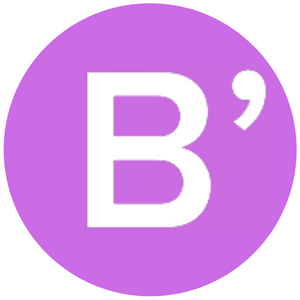The Heart vs. the Brain
When the love story is one of your book’s biggest (if not the only) plot arc, the first step I take is to break it down the Heart and the Brain.
I like to start with the Heart of the love story. All those lovey-dovey feelings, that rush of “THIS ONE!” when our characters first catch eyes/start talking to each other/get over themselves and admit they dig each other. That elusive thing: chemistry. Sexuality doesn’t have to play a big role in the Heart unless you want it to. The Heart focuses on why this person is right for your Main Character, how and what they connect over, and what emotional steps they need to take to win this person over. This is the fun stuff, obviously: first kisses and exploration and shivery touches… that feeling you get when the person you’re into looks up from whatever they’re doing and your stomach tightens.
The Brain of a love story is all the logic that backs up the passion: The normal stuff like school and parents and peers. This is where LGBTQ love stories might differ from straight ones, because our experiences and culture differ from heterosexual ones. LGBTQ teens deal with a lot of things that most straight teens have the luxury of never even knowing about.
Coming out can be a joyous, freeing experience. But on the flip side, it can also mean getting kicked out of your house or being subjected to vicious or subtle bigotry at school and at home. 20% of homeless youth are LGBTQ, despite LGBTQ youth only making up 10% of the general population. These are important things to consider when writing about LGBTQ protagonists. Even if your book isn’t about homophobia or coming out or discovering one’s sexuality per se, unless your characters live in a bubble, they will have experienced these things. It may have been in the past, before the narrative takes place, but it’s something to think seriously about, because it helps inform your characters and make them more realistic and three dimensional.
The Brain of a LGBTQ love story is where you ask all the hard questions to get down to the nitty gritty of your book and your characters. Because I write YA Contemporary, my questions will differ from an author who writes, say, YA fantasy and has control over how that world perceives LGBTQ individuals. But even within the contemporary genre, the questions asked can vary widely, depending on whether your protagonist is rural or urban, as well as what his/her background, family and friends look like.
Before I embark on the Brain of the operation, here are a few basic questions I ask myself. This is by no means a comprehensive list, but it’ll get the ball rolling.
- Is the MC out? Is the Love Interest out? To everyone? To just a few friends? To just family?
- If the MC or the love interest are not out, do they keep their relationship a secret? How does that affect the relationship? Do they act like “just friends”? Or do they pretend they don’t know each other at all except for stolen moments and kisses?
- Are the MC and/or love interest comfortable with their sexuality? Have they been in a same-sex relationship before?
- Are the MC and/or the love interests’ families accepting of their sexuality?
- Where do the MC and the love interest live? In what country? In a small town? A city? A suburb?
- Are the MC and/or the love interests’ friends supportive?
- Have the MC and/or love interest faced homophobic/bigoted behavior? From whom? Does it happen in the narrative, or is it something from the past that informs their choices now?
- Have the MC and/or love interest gained support and acceptance from people they may not have expected? How does this influence them?
- Are the MC and/or love interest religious/raised in a religious family? How does this play into their feelings about their sexuality?
- Are the MC and/or love interest part of a larger Queer community? Do they have LGBTQ friends or role models?
When all is said and done, I think the key to writing a successful LGBTQ love story is to approach it first and foremost as simply a story about two people in love. Falling in love is an experience that is unique and universal at the same time. It’s something that most of us feel at least once in our lives, or hope to, and when it comes down to it, that old saying is true: love is love—Gay, straight, questioning or undefined. The journeys we take toward love may have different paths and challenges depending on our cultures, sexualities, even our own biases, but no matter who we are, how we define ourselves, the destination is always the same: into the arms of our beloved.
Thank you so much, Tess, for such a great guest post! Some awesome tips for aspiring writers of LGBTQ YA, there! Be sure to follow Tess on Twitter at @sharpegirl, and keep an eye out for her novel, Far From You!








0 comments:
Post a Comment